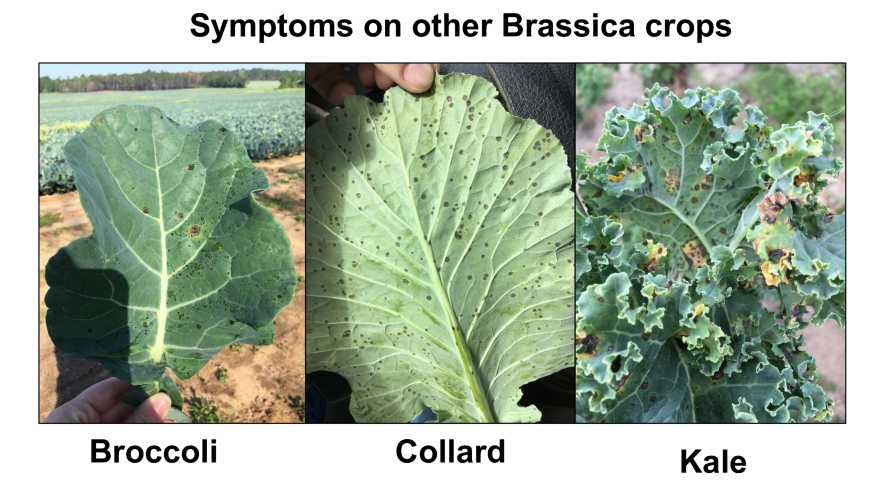
Symptoms of Alternaria leaf blight first appear on older leaves as small, dark spots that gradually enlarge with concentric rings. Brassica crops, including broccoli, collard, and kale, are all susceptible to this plant disease.
Photo courtesy of University of Georgia Cooperative Extension
Broccoli is a high-value crop for growers; but it’s also one that comes with risk. The pathogen behind Alternaria leaf blight and head rot has been a major pain for vegetable producers in recent years, especially in Georgia. In an effort to bring some relief, a new project will bring together researchers from the University of Georgia (UGA) and partner universities to fight the malady that thrives in warm temperatures and humidity.
USDA’s National Institute of Food and Agriculture recently awarded a $2.7 million Specialty Crop Research Initiative grant to UGA College of Agricultural and Environmental Sciences faculty to study the Alternaria pathogens’ biology, population structure, and fungicide resistance.
Due to developing fungicide resistance, Alternaria leaf blight and head rot have severely impacted Brassica production, according to Bhabesh Dutta, an Associate Professor of plant pathology and UGA Cooperative Extension vegetable disease specialist, who is leading the multistate project.
The disease is a long-term threat that affects all Brassica crops. The fungus causes water-soaked spots on the head of the vegetable and dark, sooty, circular spots whose centers can fall out, leaving a shot-hole appearance. Economic losses of up to 20% have been reported in some cases.
The team’s research reportedly will build on previous surveillance work done in finding fungicide alternatives. Previous efforts to limit losses in fields have not yet been successful.
According to Dutta, the team of research and Extension faculty will work to triangulate the disease by characterizing the pathogen or pathogens, host, and environment. They will also develop diagnostic tools for identifying Alternaria sp., screen commercial varieties, and evaluate production practices including nitrogen levels and irrigation, which is how the disease spreads. Economic assessments will be carried out based on what is then learned.
“The ultimate goal is to give a practical management option to stakeholders, ultimately limiting losses to this disease,” Dutta said.
Click here to learn more about the study.
October 07, 2020 at 08:06PM
https://ift.tt/34AuNur
The Fight Is on Against Fungal Foe of Broccoli - Growing Produce
https://ift.tt/3fKwWI9
broccoli
No comments:
Post a Comment